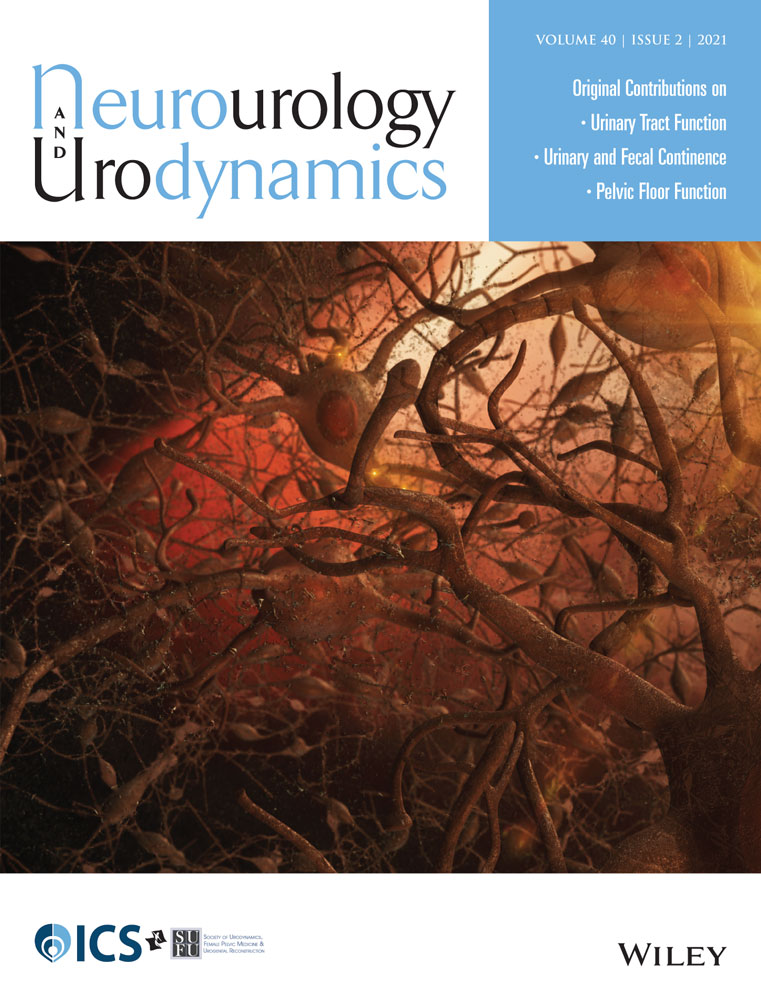“Mesh free” autologous transobturator mid urethral sling placement for predominant stress urinary incontinence: A pilot study
Abstract
Aims
To assess the efficacy and safety of autologous mid-urethral sling (MUS) in women with predominant stress urinary incontinence (SUI).
Materials and Methods
This prospective cohort study included adult women with predominant SUI seen in our urology clinic between January 2018 and March 2019. Patients with: negative cough stress test, history of prior incontinence surgery, urogenital malignancy, pelvic radiation, neurological disease, body mass index more than 40 kg/m2, the presence of more than Stage I pelvic organ prolapse, active urinary tract infection, maximum flow rate less than 15 ml/sec, postvoid residual urine more than 100 ml, abdominal leak point pressure less than 60 cm of H2O, and pregnant women were excluded. Eligible patients underwent a transobturator MUS procedure using rectus fascia as a sling. Before the procedure, patients filled the International Consultation on Incontinence Questionnaire-Female Lower Urinary Tract Symptom (ICIQ-FLUTS) and the Female Sexual Function Index (FSFI) questionnaire. Urinary outcomes were assessed at 3- and 12-months while sexual outcomes were assessed at 12-months.
Results
Thirty patients with median age of 44.5 years were included. All patients had a negative cough stress test during follow up. A significant improvement was noted in the ICIQ-FLUTS scale, bother scale, filling and incontinence subscales at 3 and 12 month follow-up. A significant improvement was also noted in the FSFI full scale score and FSFI domains of mean sexual desire, arousal and lubrication at 12 months follow-up. Two patients developed voiding dysfunction requiring urethral dilatation.
Conclusion
Autologous transobturator MUS surgery appears to be safe and efficacious in the short term. More research is needed to clarify its role in the surgical management of SUI in women.
CONFLICT OF INTERESTS
All the authors declare that there are no conflict of interests.




